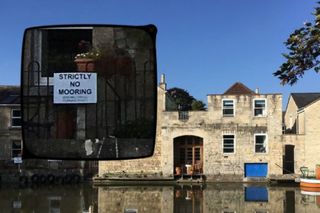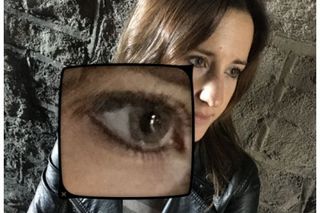iPhone 6S camera tested in depth
We test Apple's hyped-up iPhone 6S Plus camera in the real world – and get a few surprises
But how good is the new 12-megapixel camera and is the detail rendition visibly better than the old 8-megapixel model?
That depends on the subject. Apple hasn't just changed the sensor, it's changed the processing too. It's clear from studying many different images that there's more noise reduction and more sharpening with the new camera. High-contrast detail like lettering does stand out more clearly with the new camera, but fine textures look no better and, in fact, at higher ISOs, fine textures start to get smoothed over.

Click here for a full size version.


Click here for a full size version.

This is typical of how makers handle small, high-resolution sensors, and it does feel like a backward step. The differences are small and subtle, though, and judged in isolation the iPhone 6S's images are sharp, colorful and detailed.
Aberration-free images
Where it really scores over a typical point and shoot compact camera is the total absence of aberrations. Images are sharp right to the edges, there's no color fringing and straight lines stay straight, even at the edges of the frame.
Presumably there's a good deal of behind-the-scenes processing going on to achieve these results, but the fact remains that there are high-end compacts and even DSLRs that can't match this degree of optical correction.
Get daily insight, inspiration and deals in your inbox
Sign up for breaking news, reviews, opinion, top tech deals, and more.

Click here for a full size version.
Automatic HDR
The HDR mode is also very impressive. You can switch it on and off, but it's best left set to Auto so that the camera can decide when to use it. Its effect is most noticeable in outdoor scenes with bright skies – the HDR mode holds on to rich detail in skies that would otherwise blow out completely. It also does this while producing perfectly natural-looking results.

Click here for a full size version.
It doesn't always work perfectly, though. It's fine where everything is in focus because it relies on finding hard edges to transition from one exposure level to another. If you've got out-of-focus areas, however, it goes a bit wrong, because it creates a hard boundary right in the middle of a soft outline and it sticks out like a sore thumb.
DP:
The Auto HDR is subtle and produces a natural image, but watch out for close-ups with defocused backgrounds – blurred areas can show artificial-looking outlines.
Low light performance
We tested the iPhone 6S Plus in the lowest light we could find, in an unlit passageway in a derelict brick warehouse. Even then, we couldn't persuade the iPhone to go higher than ISO 400. It uses the light-gathering power of its f/2.2 lens and its highly effective image stabilizer to stave off ISO increases for as long as possible. In our tests, it was prepared to go to a shutter speed as low as 1/4sec before increasing the ISO – but the stabilization system in Dan's 6S did still produce a sharp image. It would have been interesting to repeat this test with the regular iPhone 6S (not the Plus), because that doesn't have an optical image stabilizer.

Click here for a full size version.

Click here for a full size version.

It is clear that Apple has increased the noise reduction at higher ISOs. The iPhone 6S shows little noise at ISO 400 but visible image smoothing. This is in contrast to the iPhone 6, which produces more noise but also a finer detail rendition. Most photographers would probably prefer the latter.
DP:
The iPhone will always reduce the shutter speed before increasing the ISO – keep this in mind if you're shooting moving subjects in low light.
In general, though, the iPhone 6S is very good in low light – mostly because the f2.2 lens lets in enough light that the camera can postpone increasing the ISO sensitivity until the lighting conditions are very dim indeed.
The iPhone 6S is quite prone to lens flare – like the iPhone 6 before it. If you're shooting into the light you can expect your images to show some loss of contrast and, if the sun is near or just inside the edge of the frame, you'll get much stronger lens flare effects, with streaks of light or circular reflections of the lens elements.
Autofocus speed and Live Photos
One area where the new iPhone 6S is definitely improved is the autofocus speed. On average, the 6S felt like it focused twice as fast as the iPhone 6, which made picture-taking feel more immediate and spontaneous.

Click here for a full size version.
The Live Photos mode is particularly easy to use, mostly because it's on by default and the camera doesn't behave differently in any way. In theory, then, any photo you take will come to life when you press and hold the thumbnail.
DP:
The autofocus on the iPhone 6S Plus is really quick and clearly faster than the iPhone 6.
In practice, you have to take Live Photos differently, allowing for a couple of seconds either side of the 'still' image to capture the moving pictures. Initially, most of your Live Photos will end with shots of your feet because the first thing you do (usually) is lower the camera to look at the picture.
You can just ignore the 'live' element altogether and just shoot and view your pictures as stills – though the animated element does soak up extra storage space on your device.
Current page: Image quality
Prev Page Camera controls Next Page Square mode, filters and the Photos app
Rod is an independent photographer and photography journalist with more than 30 years' experience. He's previously worked as Head of Testing for Future’s photography magazines, including Digital Camera, N-Photo, PhotoPlus, Professional Photography, Photography Week and Practical Photoshop, and as Reviews Editor on Digital Camera World.
Most Popular


